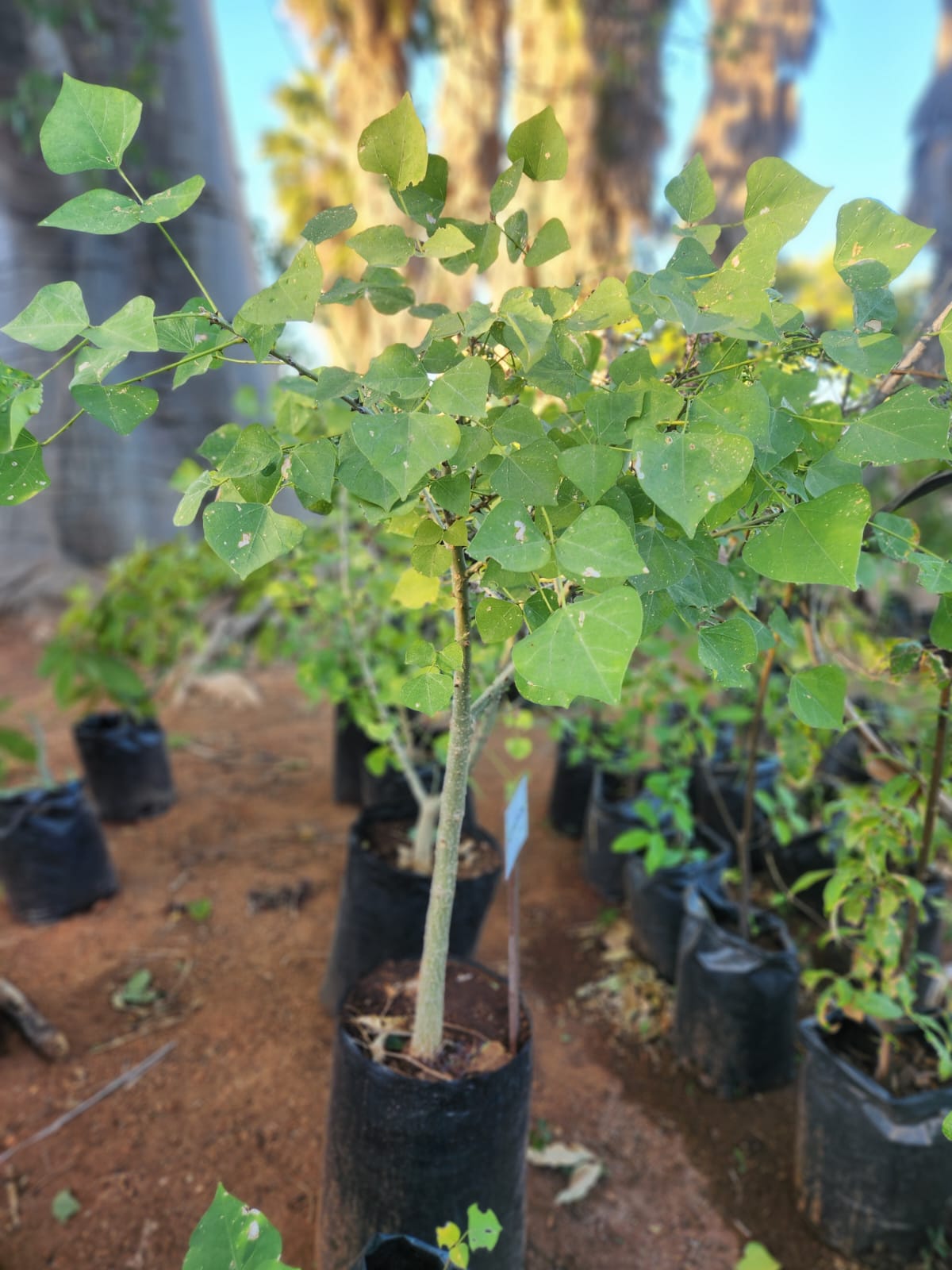Lucky Bean Tree (Koraalboom) #
Erythrina lysistemon

Quick Info #
- Distribution & habitat: Tanzania to Eastern Cape – in bushes on dunes next to the coast
- Family: Fabaceae
- Florescence: June to October, usually before the new leaves appear
- Fruiting: September to February
- Leaf habit: deciduous
- Name origin: Erythrina comes from the Greek word erythros which means “red”, and lysistemon refers to a loose stamen
- Other names: coral tree, kanniedood, mmalê (Northern Sotho), umsinstsi (Xhosa), unsinsi (Zulu)
Description #
The frost-tender coral tree is small to medium in size, growing up to about 12 m. It has a spreading, roundish, somewhat sparse crown. The trunk typically branches out while still short.
The coral tree is notable for its attractive scarlet flower, which has a large petal folding four smaller ones shut. The flowers grow in masses before new leaves appear in spring. They grow in compact clusters at the tips of branches.
The leaflets grow in clusters of three. They’re glossy, hairless and wide in the middle with a long, thin tip (nearly resembling hearts). The fruits are nutant pods in clusters. They’re elongated, thin and notably segmented. The seeds are red with a black spot.
The bark is smooth and greenish on young branches and with age it becomes greyish-brown with grooves and scattered hook-thorns, which appear on the trunk and on the branches. The old bark sometimes comes off in small blocks.
Uses & Ecology #
The tree can adapt to a range of conditions (although it is sensitive to cold). It is therefore good for supplying shade on different farms.
Straight trunks can be made into fence poles. The poles may even take root, making maintenance of the fence less work and lending it some hedge-like beauty. The wood can otherwise be used for brake-blocks, canoes, fishing net floats, fruit boxes, rafts, roofing shingles and sprags.
Various birds are drawn to the tree. Bush pigs and porcupines dig up and eat the roots. Baboons, elephants, klipspringers, kudus and nyalas eat the leaves. Vervet monkeys tend to enjoy the flowers. Swarms of bees tend to inhabit hollow trunks.
Different parts of the plant are used for magic and medicinally. Traditional medicinal uses include using the mashed leaves to treat septic sores and using the powdered, burnt bark to treat open wounds. Drops are made from the leaves to treat earaches. It is believed that the crushed leaves get rid of maggots on maggot-infested wounds.
The roots are used in a concoction to treat luxations. The bark is used to treat rheumatic and wrist inflammation. A decoction of the boilt or soaked bark is used to treat toothache.
The seeds are used to make necklaces and other adornments. Some see them as lucky charms. They also contain substances that may be valuable in thromboses treatment, though they are considered poisonous.
References #
- Mbambezeli, G. * Notten, A. (2002) Erythrina lysistemon. Available at: https://pza.sanbi.org/erythrina-lysistemon (Accessed: 25 September 2025)
- Coates Palgrave, K. & P. & M. (1989) Die Suid-Afrikaanse Boomgids. Johannesburg: Central News Agency.
- Letty, C. (1980) Ons eie boomboek. Cape Town: Tafelberg Publishers.
- Van Wyk, B & P. (1997) Field Guide to Trees of Southern Africa. Cape Town: Struik Publishers.
- Van Wyk, B. & P. (2008) Identifiseer die Bome van Suider-Afrika. Cape Town: Struik Publishers.
- Van Wyk, P. (1988) Veldgids tot die Bome van die Nasionale Krugerwildtuin. Cape Town: Struik Publishers.
- Venter, F & J.A. (2002) Benut on Inheemse Bome. Pretoria: Briza Publications.
Caution: Consult a qualified health practitioner before considering medically using or ingesting any plant parts. Any mentioned traditional uses are based on cultural practices and anecdotal evidence. They are not necessarily clinically proven or supported by modern scientific studies.